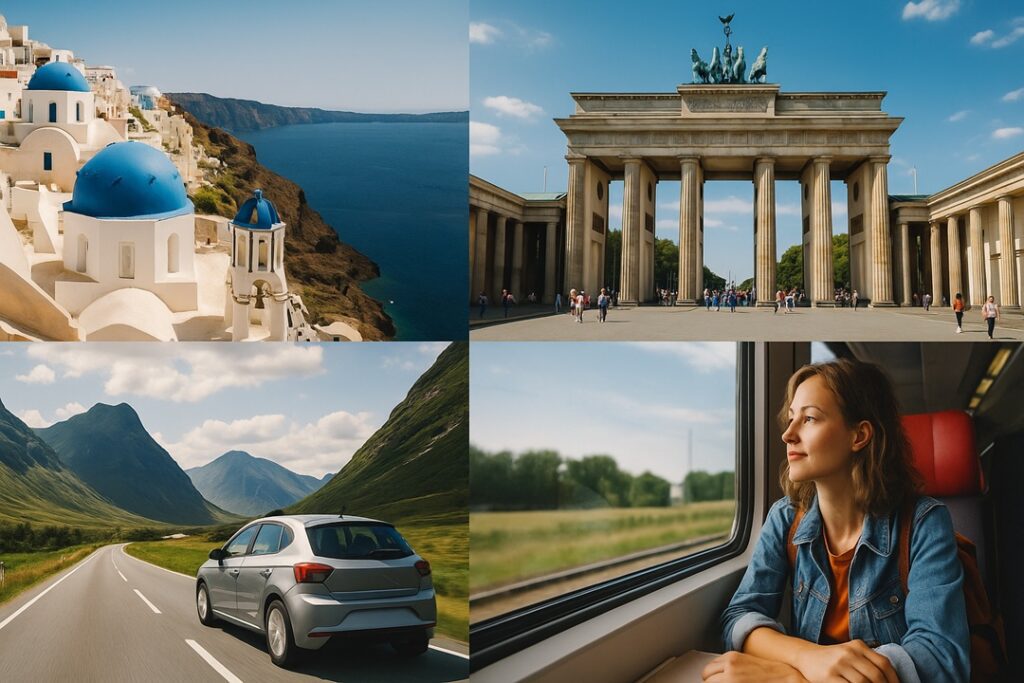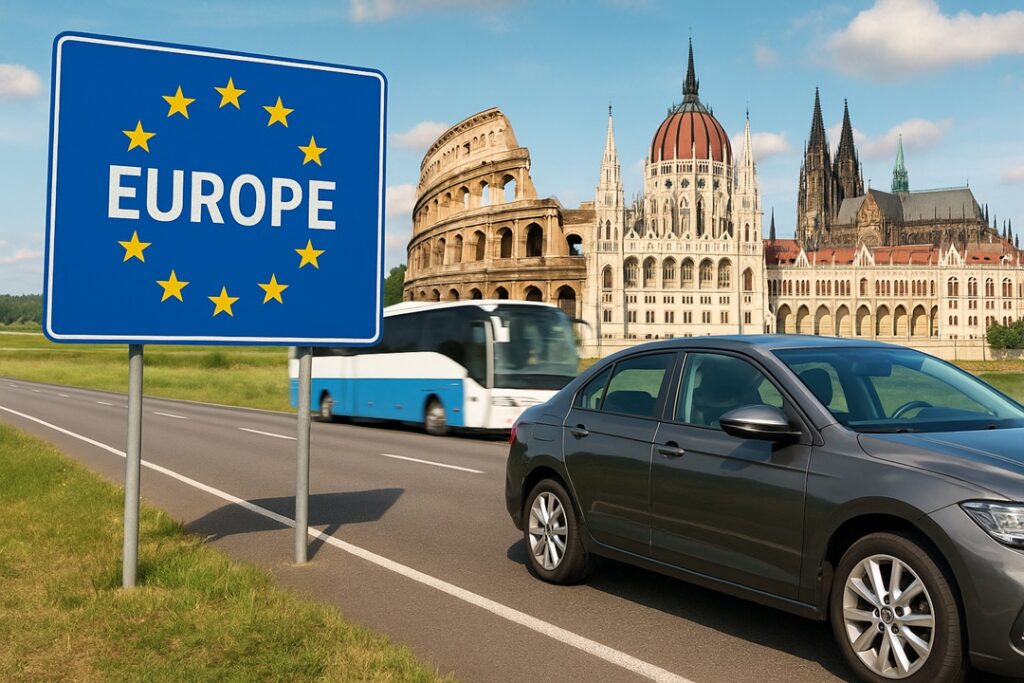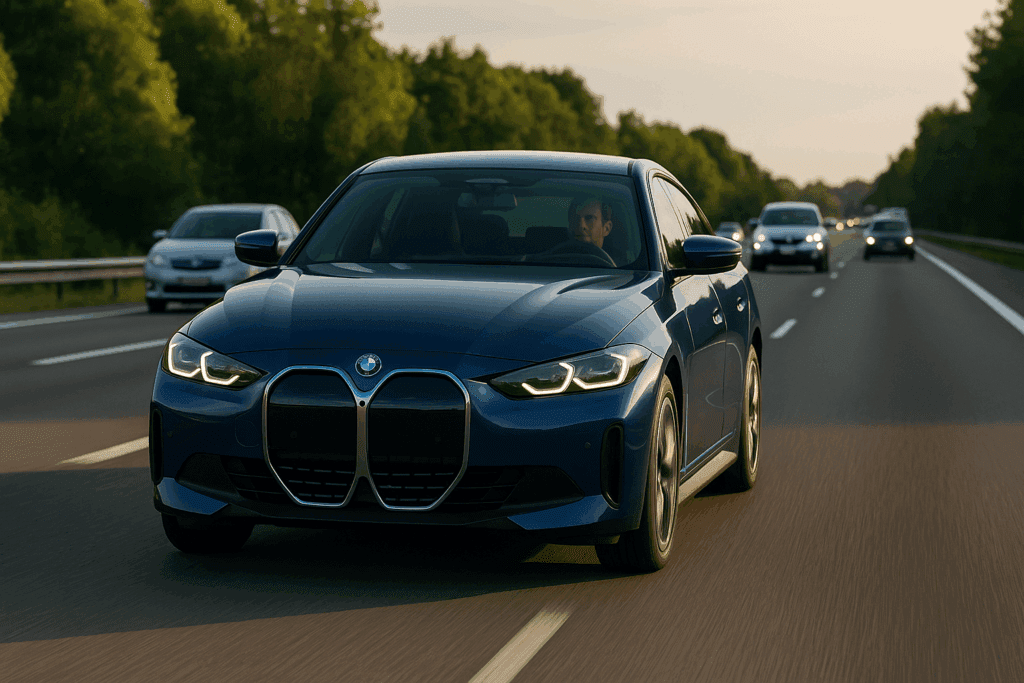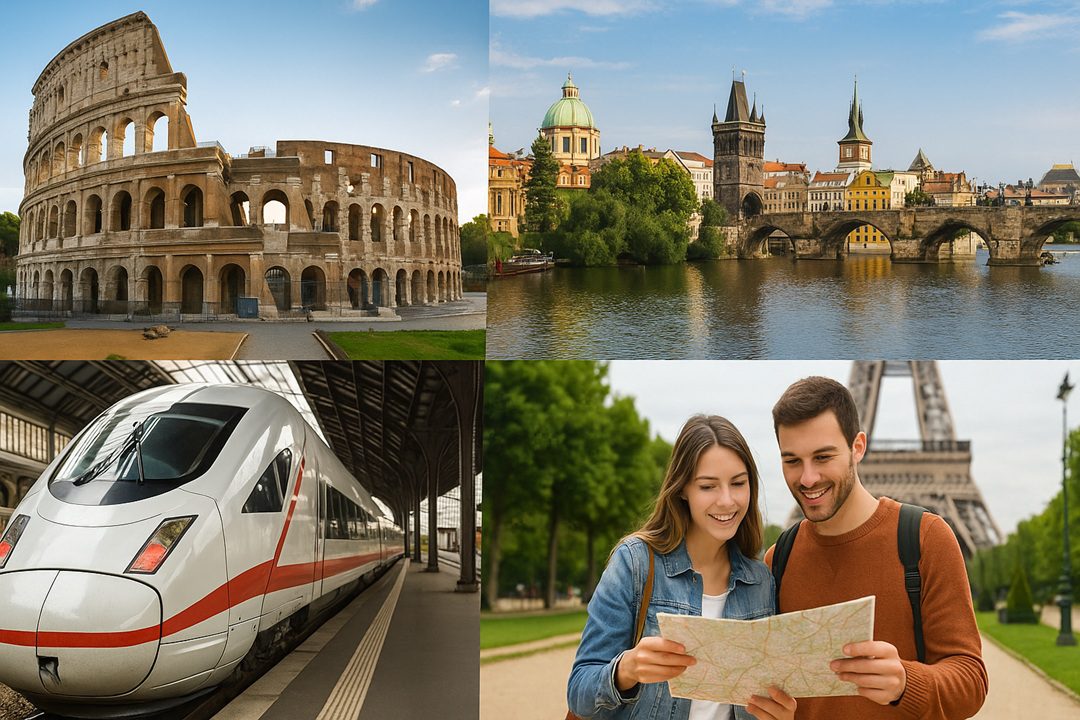Why Europe Still Holds a Timeless Allure
There’s something about Europe that never fades. Maybe it’s the layered history that seeps from every cobblestone, or the sheer variety you can experience within just a few hours’ travel. One moment you’re sipping espresso in a Roman piazza, the next you’re walking along a quiet fjord in western Norway. For travellers in 2025, Europe continues to be not just a destination, but a kaleidoscope of cultures, cuisines and contrasts — all wrapped into a continent that’s remarkably easy to navigate.
This year, there’s renewed energy across European cities and towns. Post-pandemic recovery is well behind us, and tourism has matured into something more conscious, more connected. There’s less rushing to tick boxes and more desire to stay longer, dig deeper, and travel in ways that feel human. Cities like Lisbon, Kraków and Ljubljana are drawing attention not only for their aesthetics, but for their lifestyle: slower, friendlier, more liveable.
Travel tech has evolved too — booking a last-minute rail trip, checking a museum’s real-time crowd levels, or hiring a car with just a few taps has never been easier. Yet amid the digital conveniences, the real magic still lies in local conversation, a quiet backstreet you hadn’t planned to find, or a late-night meal that lingers in your memory longer than any Instagram reel.
The Travel Mood of 2025: How Brits Are Rediscovering the Continent

British travellers are heading back to Europe with a new mindset in 2025. Gone is the package-holiday mentality. Instead, there’s a growing hunger for flexible, independent trips — often mixing a few days in a cultural capital with time in the countryside, or even remote villages. Train routes are seeing a renaissance, especially for those wanting to avoid airport stress and baggage limits. And while budget flights are still very much alive, they’re increasingly being balanced with longer, more meaningful journeys.
The ease of movement is still one of Europe’s biggest charms. Post-Brexit, some paperwork might have become more tedious, but the infrastructure is solid. Once you’re on the continent, it’s perfectly normal to cross two or three countries in a single day — especially with high-speed trains like the TGV in France or Germany’s ICE network.
For those craving freedom, car hire remains an attractive option. Picking up a rental at Charles de Gaulle and dropping it off in Milan is not only possible but surprisingly affordable with the right provider. It’s especially handy if you’re planning to visit smaller towns, national parks, or wine regions that are well off the main transport grid. That said, driving in Europe means adjusting to toll roads, roundabouts with personality, and the occasional local driver with Formula 1 ambitions.
Meanwhile, digital nomads and long-weekenders alike are making use of app-based transport — from regional buses to electric scooters — to explore without hassle. And let’s not forget the renewed love for sleeper trains, which are making a chic, low-carbon comeback with routes from Berlin to Paris, or Vienna to Amsterdam.
Berlin: Where History Meets the Unexpected
Berlin doesn’t try to charm you. It doesn’t parade its monuments or polish its image for tourists. And that’s exactly why it sticks with you. It’s a city of contradictions — raw yet refined, chaotic but oddly calm. At any given moment, Berlin feels like a place still working itself out, which makes it one of the most exciting destinations in Europe right now.
Walk through Kreuzberg and you’ll find Turkish markets sitting next to minimalist coffee shops, with 90s techno still throbbing from hidden basements. Head east to Friedrichshain and it’s murals, punk bars and repurposed warehouses. Yet just across the river, Mitte reminds you that Berlin can do sleek modernism and quiet elegance too — with art galleries, historic boulevards and cafés where conversations drift between German, English and something in-between.
The city wears its past openly. You don’t need a tour guide to feel the weight of history — it’s there in the Berlin Wall remnants at East Side Gallery, in the cobblestones marked with names of Holocaust victims, in the layered silence of the Memorial to the Murdered Jews of Europe. And still, Berlin never feels stuck in the past. It’s constantly reimagining itself, whether through experimental theatre, radical sustainability projects, or pop-ups that turn into institutions overnight.
For British travellers, Berlin also offers a surprising sense of ease. English is widely spoken, and the local attitude is refreshingly direct — no sugar-coating, but also no pretence. You’re free to be whoever you are here, and Berliners, famously unfazed, will simply let you get on with it.
When it comes to getting around, Berlin’s public transport system is almost irritatingly efficient. The U-Bahn (underground), S-Bahn (overground), trams and buses are all connected via a single ticketing system. You can travel from a lakeside suburb like Wannsee to the heart of Alexanderplatz in under 40 minutes. If you’re in town for more than a few days, grab a Berlin WelcomeCard — it covers all zones and gives discounts to many museums and attractions.
That said, the city is surprisingly walkable too. Many of Berlin’s best experiences happen when you’re not following a map: stumbling into an open-air bar on the banks of the Spree, or finding a currywurst stand that doesn’t make you regret your choices.
Berlin also makes for a perfect launchpad. Trains to Leipzig, Dresden, or even Prague and Warsaw leave regularly from Hauptbahnhof, the massive central station. If you’re hiring a car, the autobahn offers a unique thrill — but be aware: unlimited speed zones are fewer than they used to be, and the rules (especially around overtaking) are strictly enforced.
Travelling Across Europe: What Works Best in 2025

Getting around Europe in 2025 is both easier and more unpredictable than ever. You’ve got more options than you can shake a passport at — from budget airlines to sleeper trains, shared buses to flexible car hire — but choosing the right one depends on where you’re going, how much time you’ve got, and how well you cope with chaos.
Let’s start with planes. Short-haul flights still dominate cross-border travel, especially for distances over 600 km. Carriers like Ryanair, Wizz Air, and easyJet continue to offer absurdly cheap fares — if you’re quick and travel light. But those £15 tickets often come with caveats: odd airports located far from city centres, 4am departures, and more fees than a London bank. Still, if you’re hopping from Manchester to Milan or from Edinburgh to Budapest, flying is hard to beat for speed.
But trains have made a serious comeback. High-speed lines like France’s TGV, Spain’s AVE, or Germany’s ICE now connect major cities in a matter of hours. London to Paris via the Eurostar takes just over two hours, and from there you can be in Barcelona, Lyon or Geneva the same day without setting foot in an airport. Yes, tickets can be pricey if booked last-minute, but early bookings or rail passes (like Interrail) make overland travel surprisingly accessible — and undeniably more comfortable than being herded through budget terminals.
Night trains are also seeing a revival, thanks to a mix of nostalgia and eco-consciousness. Austrian operator ÖBB is leading the charge with its Nightjet service, connecting Vienna, Berlin, Paris, and even Rome. Imagine falling asleep in one country and waking up in another — without the faff of security checks or 100ml liquid limits. For some, it’s the most civilised way to cross borders.
Then there’s the long-distance bus scene. Operators like FlixBus and BlaBlaCar Bus cover almost every corner of the continent, often for the price of a coffee and a pastry. Comfort levels vary, and timetables can be… flexible. But for budget travellers or last-minute trips, they’re hard to ignore. Just bring headphones, patience, and maybe a pillow if it’s an overnight route.
Now, about car hire — it’s not just for rural getaways or family holidays anymore. Renting a car in Europe is incredibly straightforward, especially if you stick with major providers and know the basics. Most British driving licences are still accepted in the EU, though you may need an International Driving Permit depending on the country and length of stay. Germany and Italy are among the easiest places to rent, with well-maintained roads and clear signage. France and Spain offer incredible drives through wine country or along the coast — but watch for toll roads, and make sure to have a credit card for the deposit.
One thing to keep in mind: automatic cars are still less common in some countries, and tend to be more expensive. If you can drive stick, you’ll have a wider choice and lower rates. Also, don’t underestimate urban traffic. Driving in Naples, Marseille or Bucharest is not for the faint-hearted. But if you’re exploring the Dolomites, the Scottish Highlands, or Slovenia’s lake region, nothing beats the freedom of four wheels.
Hiring a Car in Europe in 2025: What You Need to Know

For many travellers in 2025, hiring a car is no longer just a practical solution — it’s a gateway to a completely different kind of European experience. Whether you’re heading for vineyard backroads in France or alpine passes in Austria, nothing beats the freedom of your own set of wheels.
In most major cities and airports, you’ll find the usual suspects: Hertz, Avis, Enterprise, Sixt, and Europcar — all offering a wide selection of vehicles and relatively streamlined booking processes. Many of them have embraced digital key pick-ups and app-based check-ins, making it easier to skip the counter and go straight to your car.
But in 2025, more travellers are also turning to newer, more flexible car sharing and rental platforms — especially in cities like Berlin, where owning a car is more a hassle than a necessity. That’s where services like Getmancar come in. Originally known for its presence in Eastern Europe, Getmancar has recently expanded into Germany, opening new offices in several cities, including Berlin. The service blends the convenience of app-based short-term rentals with a traditional hire structure — making it ideal for both urban trips and weekend escapes. You can view their current fleet and rental conditions directly on their website: https://getmancar.com/berlin/rent.
As for driving in Berlin: while the city itself is well connected by public transport, renting a car makes sense if you’re planning day trips — to Potsdam, Saxon Switzerland, or even the Baltic coast. Just bear in mind Berlin’s Umweltzone (environmental zone), which requires all vehicles to meet low-emission standards. Most rental cars are compliant, but it’s always worth double-checking before you book.
Parking in the city centre can be tricky and pricey — but head just outside the ring and it becomes easier. Many Berliners don’t drive daily, which means traffic isn’t as aggressive as in cities like Paris or Rome. That said, German road rules are taken seriously. Speed limits change often and are clearly posted, and autobahn driving — while famous for its unlimited stretches — still demands your full attention.
Cities and Regions Making Headlines This Year
If 2025 had a map of trending destinations, it would look slightly different to what you might expect. The old favourites are still drawing crowds — but the mood has shifted. Travellers are veering away from the over-filtered clichés and looking for places that offer more breathing space, local connection, and a reason to stay just a bit longer.
Paris, fresh off the post-Olympics buzz, feels recharged. The city has poured serious effort into public spaces, transport, and accessibility. You’ll notice cleaner air, more pedestrian zones, and better cycling routes — especially around the Seine and out towards La Villette. Museums have embraced digital tools without losing their soul, and even the notorious Parisian attitude feels softer these days. If you’ve been before, it’s worth going again — just with more patience and fewer expectations.
Over in Portugal, Lisbon and Porto continue their rise. Once seen as budget-friendly alternatives to Spain, they’ve now developed identities of their own. Lisbon’s mix of crumbling beauty and cutting-edge design is still magnetic, but the real charm lies in its backstreets: tiled alleyways, late-night tascas, the sound of fado spilling from open windows. Porto, slightly moodier, leans more into wine culture and the dramatic backdrop of the Douro River. Prices are creeping up, especially in the city centres, but head just a few kilometres inland and it’s a different story entirely.
If nature calls, Slovenia is answering. This small country punches well above its weight, especially for travellers looking to escape the crowds. Lake Bled is picture-perfect, but it’s the less-photographed corners — like the Soča Valley or Triglav National Park — that leave a lasting mark. Slovenia also excels in slow travel: farm stays, local wines, and forest hikes without the noise. It’s ideal for those wanting to recharge, not just sightsee.
The Adriatic remains a big draw, but with a twist. Croatia’s Dalmatian coast is still gorgeous — Split, Dubrovnik, and the islands are as blue and sun-drenched as ever — but tourism saturation is pushing people further south. Montenegro’s Bay of Kotor, for instance, is starting to feel like what Croatia was a decade ago: dramatic landscapes, old towns, and far fewer tour buses. Albania is also stepping into the spotlight, particularly the Riviera around Himarë and Sarandë. It’s still rough around the edges, but that’s part of its charm.
And then there’s Georgia. Not the American one — the wild, mountainous nation at the edge of Eastern Europe. While not part of the EU, it’s becoming an offbeat favourite for those who’ve done the usual western routes. The capital, Tbilisi, is all tangled streets, art-deco ruins and rooftop bars. Head north along the Georgian Military Highway and you’ll find alpine villages that feel like stepping into a storybook — but with better food and fewer crowds.
Blending In: Tips for Respectful Travel
Travelling through Europe isn’t just about seeing new places — it’s about learning how to move through them in a way that feels right. In 2025, with tourism bouncing back stronger and smarter, there’s a growing awareness that being a good traveller means more than just recycling your coffee cup or choosing a local Airbnb. It’s about understanding the rhythm of a place — and adjusting yours accordingly.
First off, manners. Every country has its own unwritten rules, and ignoring them doesn’t make you edgy — it just makes you annoying. In Germany, being late is frowned upon. In Italy, showing up early might confuse your host. In France, a polite “bonjour” when you walk into a shop goes a long way. In Spain, dinner at 6pm will earn you puzzled looks — the evening doesn’t really get going until 9. And in the Netherlands, don’t expect overly warm greetings; directness is valued more than small talk.
Then there’s dress. No one’s saying you need to pack like royalty, but blending in is easier when you look like you made an effort. Flip-flops and football shirts in city centres scream “day-tripper.” Want to be mistaken for a local? Neutral tones, smart trainers, maybe a scarf. In churches or religious sites, modest clothing isn’t optional — it’s basic respect. That sleeveless top might be fine on the beach, but not in a cathedral in Kraków or a monastery in Greece.
Tipping can also be a minefield. In the UK, it’s expected in restaurants. In France or Italy, it’s more symbolic — a few coins left on the table. In Scandinavia, service is often included. In Eastern Europe, tips are appreciated but not assumed. Best rule? Round up unless told otherwise, and always check the bill — “service included” means what it says.
Language matters too. No one expects you to speak fluent Czech or Hungarian, but learning a few basics — hello, thank you, please — makes a difference. Locals appreciate the effort, even if your accent’s off. And English may be widely spoken, but don’t assume. In rural areas, a phrasebook or app can go further than you think.
And then there’s the art of not standing out. Loud conversations on public transport? A no-go in Vienna. Crossing the street against the light? Risky in Switzerland, annoying in Germany. Queue-jumping? Not tolerated anywhere, unless you want to be politely but firmly corrected — or stared at until you melt.
At its heart, respectful travel is about humility. You’re a guest, not a customer. You’re entering someone else’s everyday life, not a theme park. Ask questions, listen more than you talk, and leave a place a little better than you found it — even if it’s just by smiling, saying “grazie” or not taking that one extra selfie on someone’s doorstep.
Wrapping Up: What Travel in Europe Really Looks Like in 2025
So, what does it actually feel like to travel across Europe in 2025? In a word: human. The continent hasn’t lost its spark — if anything, it’s found a better version of itself. The crowds are back, yes, but so is the sense of purpose. Travellers are choosing quality over quantity, swapping whirlwind tours for longer stays, and chasing stories rather than checklists.
Technology has smoothed the edges of the journey. Booking trains, scanning museum passes, translating menus — it’s all at your fingertips now. But at the same time, there’s a shift away from over-curated experiences. People want the odd misstep, the unscheduled afternoon, the café that wasn’t on any list. Those are the moments that end up meaning the most.
Travelling smart in 2025 isn’t about squeezing in as many cities as possible — it’s about slowing down just enough to notice where you are. Avoid the peak months when possible. A week in Paris in March will show you a very different city than in July. Go to the second city instead of the capital. Choose the early morning train. Book that rental car and drive through the bits of Europe that don’t have a souvenir shop on every corner.
And more than anything — talk to people. A question asked in halting French or German is still better than silence. Locals are your best guides. They’ll tell you where to eat, what to skip, and which road leads to the view no one else has found yet.
In the end, Europe in 2025 is what you make of it. It can be fast or slow, old-world or cutting-edge, structured or spontaneous. It’s a continent that still invites curiosity — and rewards it every time. So whether it’s your first trip or your fifteenth, pack a little lighter, plan a little looser, and let the road surprise you.
We hope you’ve enjoyed our take on Europe’s best travel spots for 2025 — and picked up a few helpful insights along the way. Stay tuned with A1DogTravel — there’s plenty more to come, from hidden gems to hands-on travel guides, all designed to make your next journey unforgettable.
